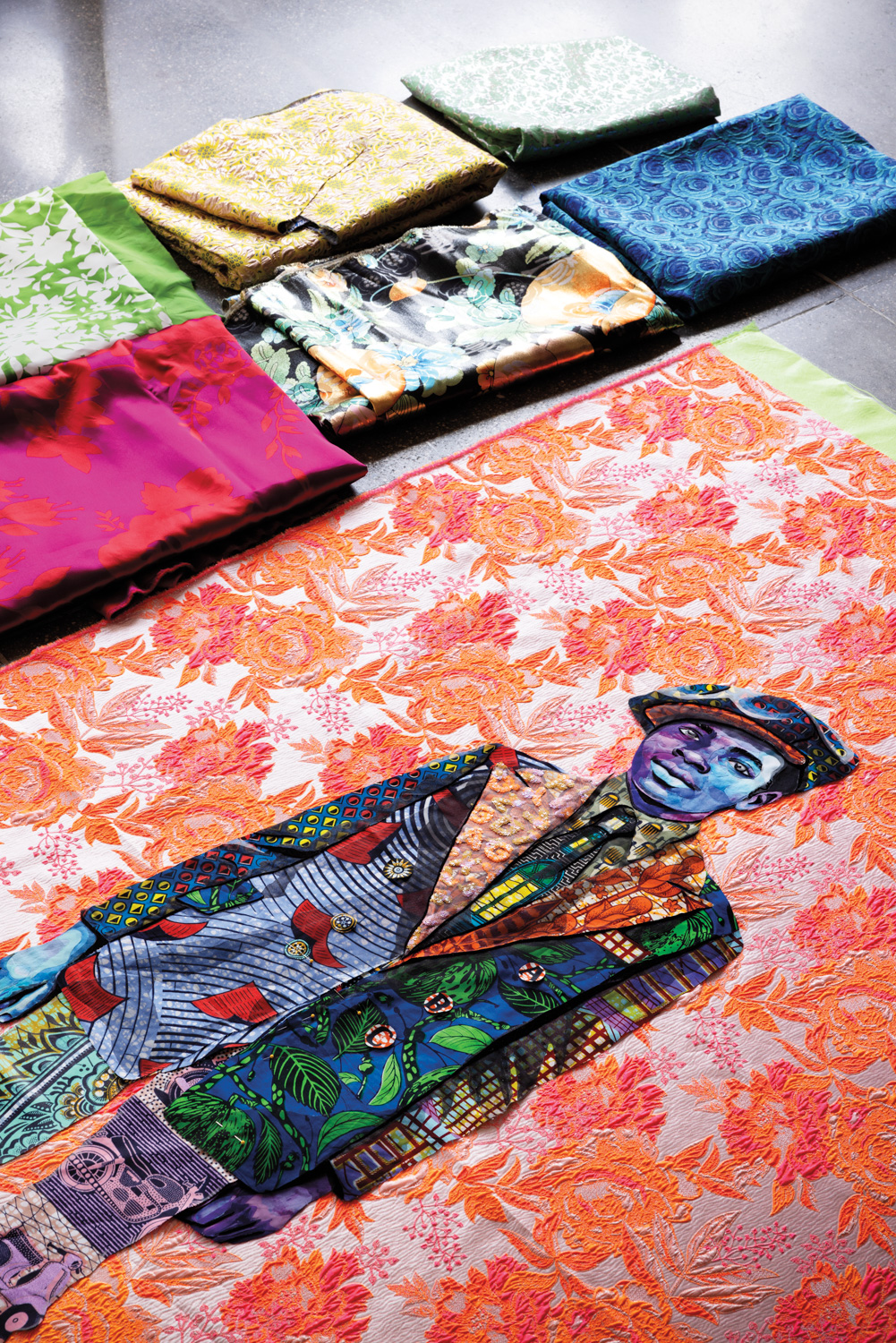
We People Who Are Darker Than Blue.

Artist Bisa Butler selects textile swatches in her New Jersey studio, where framed prints and new works mingle with vibrant fabric piles.
For some artists, a brush loaded with paint is the ultimate conduit for creativity. But, for Bisa Butler, who studied painting as a Howard University undergraduate, that medium missed the mark. “My work was uninspired,” she recalls. “It was very photorealistic and didn’t have many unique or imaginative elements.” Butler’s voice emerged when she traded her brushes for the tools of a quilter.
In a fiber arts class at Montclair State University, where she earned a master’s degree in arts education, she created her first quilted portrait—a textile take on a wedding day photo of her grandmother, Violet. “It was an emotional, psychological rendering more than just a facsimile of my grandmother’s face, and I felt it, my professors felt it, my classmates felt it,” Butler recalls. “I knew I had tapped into something really visceral for me.”
Since then, Butler’s arresting, life-size portraits of Black subjects have been displayed internationally, from Smithsonian institutions to Art Basel in Switzerland. Her Jersey City studio is currently the site of preparations ranging from vivid new works for a children’s book and a 2025 solo exhibition in Washington, D.C.
Critical to this success is Butler’s ability to capture what she calls the “emotional residue” that emanates from the original photographs that inspire her work. To find it, she searches the portfolios of living photographers like Janette Beckman and Jamel Shabazz, and mines the National Archives, unearthing powerful images by 20th-century photojournalists including Gordon Parks, Russell Lee and Dorothea Lange, who helped create a pictorial record of American life between 1935 and 1944.
To create her compositions, Butler borrows from the language of painting. Just as she once layered blocks of color on canvas, she begins with a base fabric, then stitches on African textiles that nod to her heritage, lamé and knits that reference the hippie and disco eras, and transparent fabrics—like the laces and chiffons favored by her fashion-forward mother and grandmother, who made their own dresses—“to give a painterly effect,” the artist says.
Much as a psychic reads auras, Butler considers her subjects’ spirits before selecting the Day-Glo hues that depict their facial features. “It’s not that I’m trying to obscure that these people are Black,” she says of this swerve from realism, “but I want to convey something more than skin tone. If viewers feel like they can see into the heart of that subject, perhaps they can start thinking about how they interact with people they consider ‘other.’ I hope they see the mirror of humanity there.”